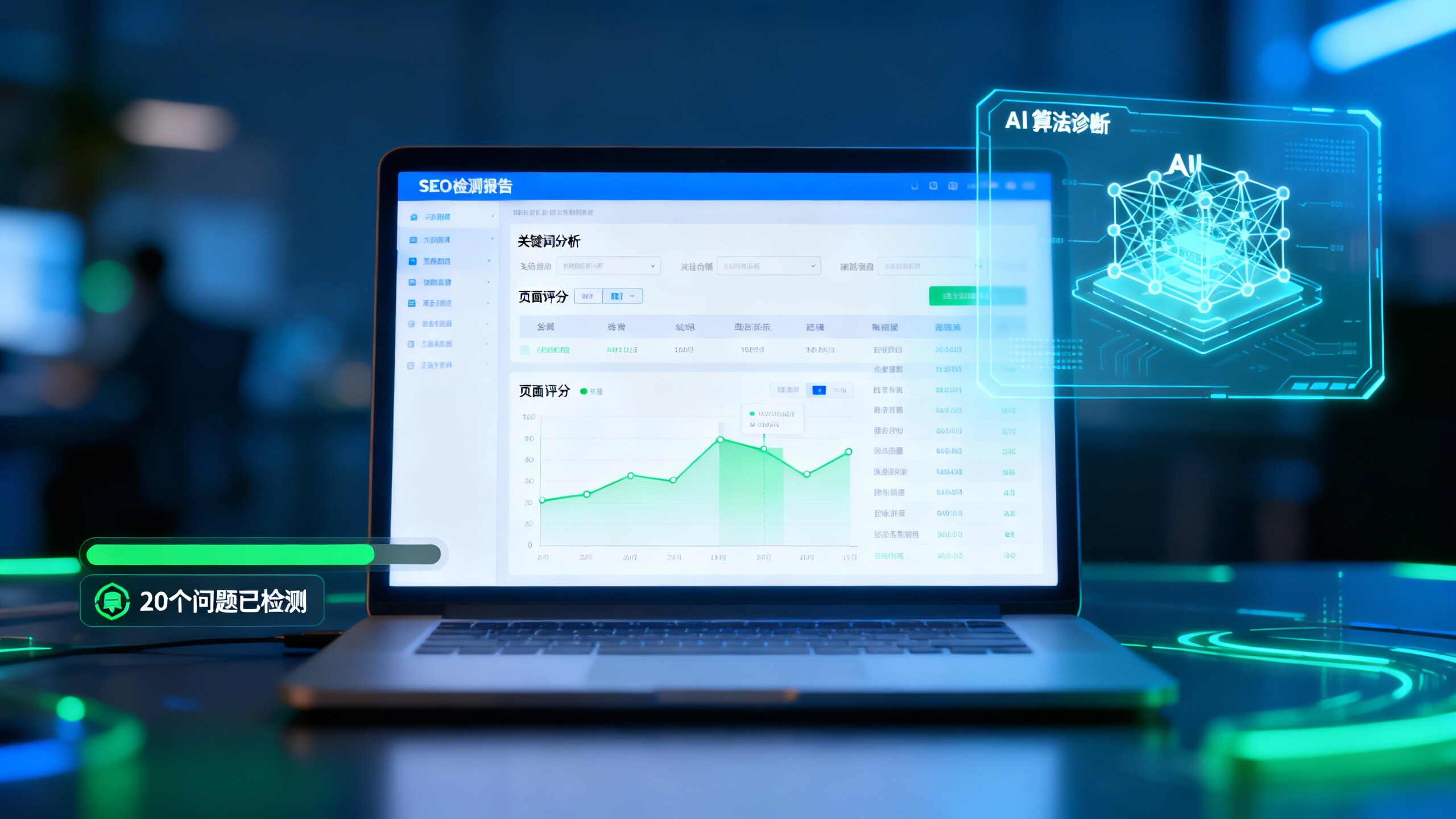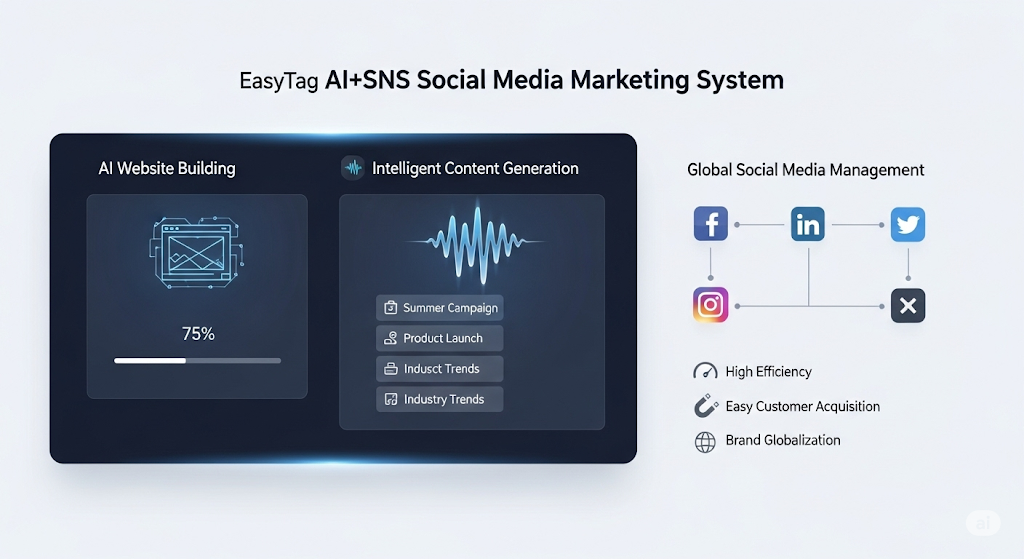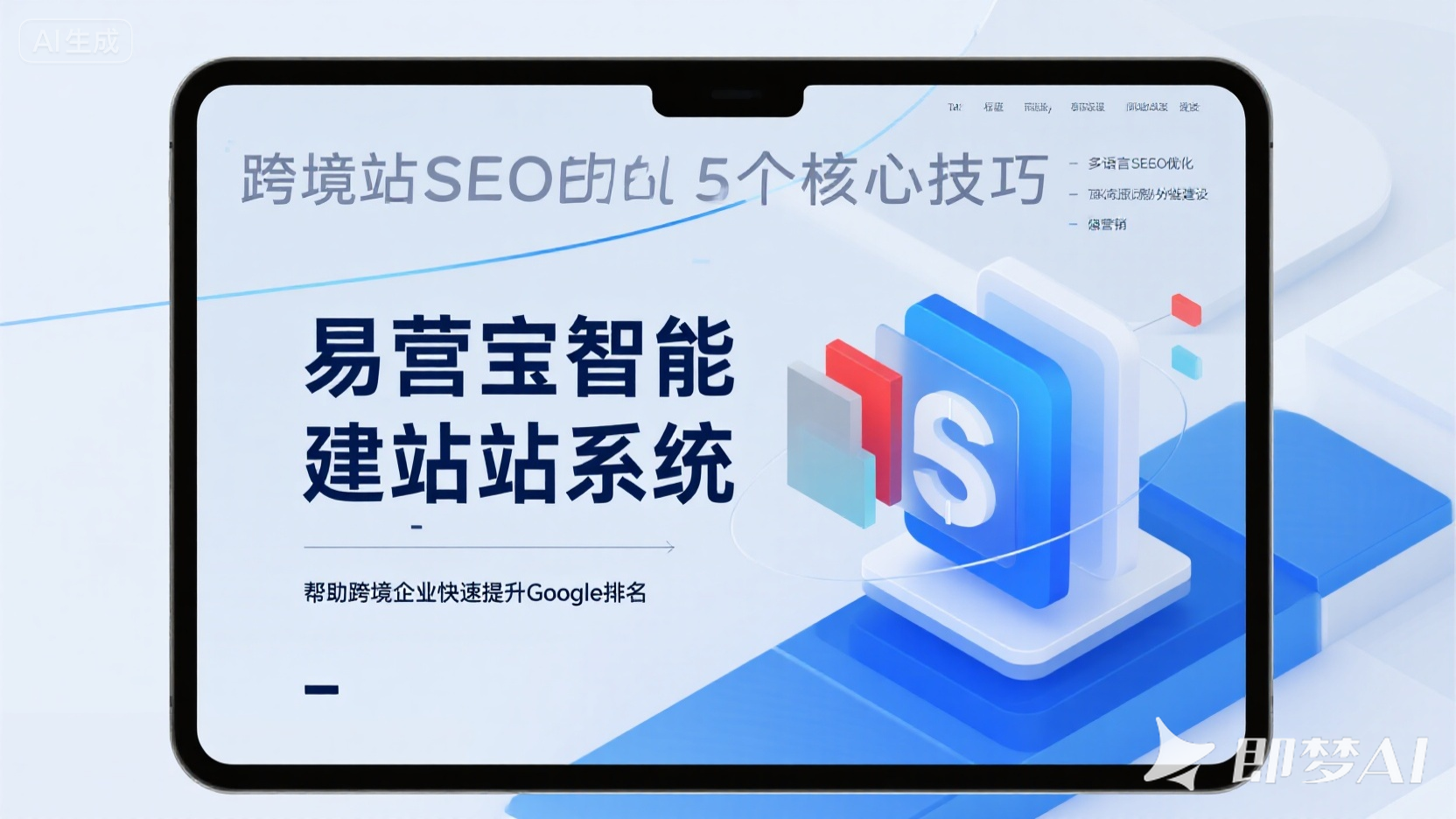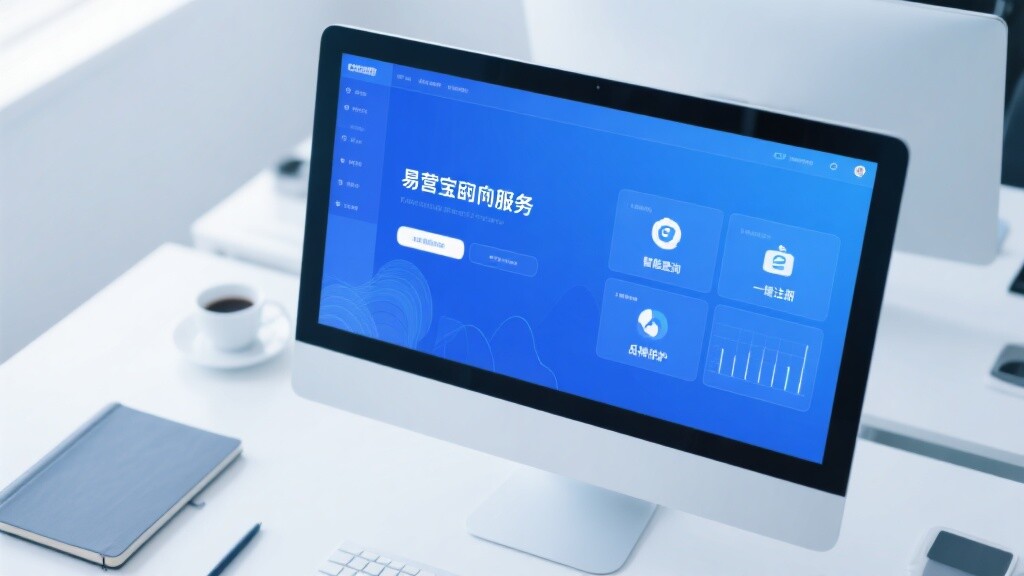Easy Operation Cloud Intelligent Website Marketing System Platform!
- Dalian City Partners' Real Record: Why Did They Choose AI Marketing Engine? The Results Are Astonishing2025-11-14View details
- New Opportunities for Wuxi City Partners: AI Marketing Engine Empowers Traditional Business Transformation2025-11-14View details
- Why is the AI Marketing Engine + City Partner Model Rapidly Exploding in Nanchang?2025-11-14View details
- Struggling with Facebook ad optimization? 3 steps to boost ROI over 50% with proven techniques2025-11-14View details
- How can an AI+SEM smart advertising marketing system achieve double the advertising efficiency?2025-11-14View details
- No results from Yandex ads? 90% of people make these 5 mistakes2025-11-14View details
- Overseas Promotion Strategy Sharing: How to Use AI Systems to Break into the European and American Markets?2025-11-14View details
- Google Certified Service Provider vs. Regular Agent: What's the Difference in Effectiveness?2025-11-14View details
Multilingual SEO Optimization: How to Attack Overseas Search Markets with 6 Keyword Strategies?
Want to conquer the overseas search market with six key keyword strategies? This article focuses on multilingual SEO optimization and building multilingual independent e-commerce websites, while also covering SEM optimization techniques. Faced with massive language variations and regionalized search behavior, operators and information researchers often wonder: how to find a balance between brand promotion and traffic growth? This article starts with definitions, breaks down six key keyword strategies (core brand keywords, long-tail semantic keywords, regionalized terms, language variations, competitive intelligence keywords, and conversion intent keywords), and combines them with practical scenarios for multilingual website construction and independent e-commerce website operation, providing actionable implementation paths and priority suggestions. The entire article revolves around multilingual SEO optimization services and SEM optimization techniques, taking into account both technical performance and implementation processes, aiming to help users break down complex multilingual strategies into a manageable matrix, thereby accelerating global customer acquisition.

Definition and Overview
Multilingual SEO optimization refers to achieving consistency and localization of website content, metadata, structured data, and technical SEO across different languages and regions to improve organic rankings in target market search engines. For independent e-commerce websites, multilingual website construction involves not only page translation but also URL structure, hreflang tags, server localization, and page loading performance optimization. When implementing the six key keyword strategies, it's necessary to conduct keyword research and content generation in parallel: on the one hand, identifying high-intent keywords through AI-driven keyword expansion and global search data; on the other hand, constructing pages and landing pages using localized corpora and brand promotion tone. Through this definition and methodology, teams can clearly define the core objectives of building multilingual independent e-commerce websites: covering market semantics, reducing bounce rate, and increasing conversion rate, thereby supporting long-term operation and brand promotion of independent e-commerce websites.
Industry Background and Market Overview

The current global search ecosystem is fragmented: major search engines in different countries (such as Google, Yandex, Baidu Overseas, Bing, etc.) interpret and display keywords differently, and the competitive landscape changes significantly with varying market maturity. For information researchers, it's crucial to pay attention to three signals: search volume and seasonality, conversion intent intensity, and regional search differences. Taking YiYingBao's years of service experience as an example, since its establishment in 2013, the company has combined artificial intelligence and big data-driven methods to serve over 100,000 companies expanding overseas, forming a closed-loop traffic system covering multiple languages and channels. Market analysis shows that independent websites using intelligent website building and global server acceleration see an average 35% increase in SEO scores and approximately 40% improvement in loading speed in target markets, significantly improving organic conversion rates. Considering overall market trends, brand promotion and technical optimization must be given equal importance to achieve steady growth in the overseas search market.
Technical Performance and Implementation Considerations
On the technical level, key elements include: reasonable multilingual URLs and hreflang implementation, globally accelerated server deployment with proximity, mobile-first page structure, structured data and multilingual sitemaps, and keyword landing page optimization in conjunction with SEM optimization techniques. YiYingBao's AI marketing engine, through a three-pronged system of "AI keyword expansion + automatic TDK generation + AI image generation," can efficiently generate multilingual TDK and page content, reducing the workload of manual translation and proofreading. Simultaneously, regarding traffic and cost management, it is recommended to combine traffic protection solutions in e-commerce promotions or media distribution scenarios, such as using website traffic packages to lock out outbound traffic costs and achieve prepaid cost optimization; this solution supports automated API procurement, BI integration, and real-time monitoring, suitable for the stable access and compliance needs of independent foreign trade websites. Technical implementation should also include search engine-friendly indexing strategies and regular SEO health checks to promptly address traffic loss issues caused by Traditional/Simplified Chinese characters, spelling variations, or regional keywords.
Client Case Studies and Common Misconceptions (Case Studies & FAQ)
Real-world examples best illustrate the value of this methodology: A manufacturing client nearly doubled their organic search conversion rate in North America and Europe by building a multilingual website and a multilingual content matrix; another education client combined automated social media operations to achieve synergy between brand promotion and traffic, reducing customer acquisition costs. Common misconceptions include: only doing machine translation without localization proofreading, putting all languages in the same URL without using a localization strategy, and neglecting server localization, leading to slow cross-border loading. Regarding FAQs, researchers often ask: How much budget is needed for multilingual SEO optimization? The answer depends on the market and the level of competition. We recommend dividing the budget into three parts: technical investment (website building and server), content investment (localized content creation), and SEM optimization budget. Operators often ask how to synchronize SEM optimization techniques with organic search strategies. We recommend using keyword layering—using high-intent keywords for the paid conversion layer and long-tail and brand keywords for the SEO accumulation layer. For further consultation on implementation details or to obtain a personalized diagnostic report, please contact us for a customized solution and technical support.

Trends and Call to Action (Trend & Why choose us / Contact us)
Looking ahead, multilingual SEO optimization will increasingly rely on AI and big data-supported semantic understanding, automated content generation, and real-time performance monitoring. Since its establishment in Beijing in 2013, YiYingBao Information Technology (Beijing) Co., Ltd. has adhered to a dual-track strategy of "technological innovation + localized service," building a full-chain solution covering intelligent website building, SEO optimization, social media marketing, and advertising. It was selected as one of the "Top 100 Chinese SaaS Enterprises" in 2023. We possess a global server cluster, AI-powered advertising management, and a creative factory model, enabling operators to master keyword matrices in the operation of independent foreign trade websites, achieving brand promotion and sustainable growth. If you wish to combine multilingual SEO optimization with SEM optimization techniques, or require detailed consultation on multilingual website construction and global server acceleration, please contact us for a customized solution. Choosing us means choosing ten years of deep cultivation and technology-driven, actionable capabilities to help your global business scale rapidly.
- Campbell (name)
- Website
- free-standing station
- Independent site operation
- Multilingual SEO
- Multi-language website
- Social Media Marketing
- SEO optimization
- website traffic
- Intelligent website building
- Foreign Trade Independent Website Operation
- Independent website building
- Global Server Acceleration
- Foreign trade independent website
- Multi-language website development
- SEO optimization services
- Foreign trade independent website construction
- Multilingual SEO optimization
- SEO
- AI Marketing Engine
- Multilingual SEO Optimization Services
- social media automation
- SEM Optimization Tips
- Multi-language foreign trade independent website construction
- Brand Promotion
Related Articles
 Shijiazhuang City Partner Recruitment: Low-barrier entrepreneurship projects that ordinary people can also do?
Shijiazhuang City Partner Recruitment: Low-barrier entrepreneurship projects that ordinary people can also do? Is multilingual SEO optimization service worth it? Saves 60% of time compared to traditional solutions.
Is multilingual SEO optimization service worth it? Saves 60% of time compared to traditional solutions. Intelligent website SEO optimization service, detect 20 ranking-impacting issues in 1 minute
Intelligent website SEO optimization service, detect 20 ranking-impacting issues in 1 minute
Related Products

















